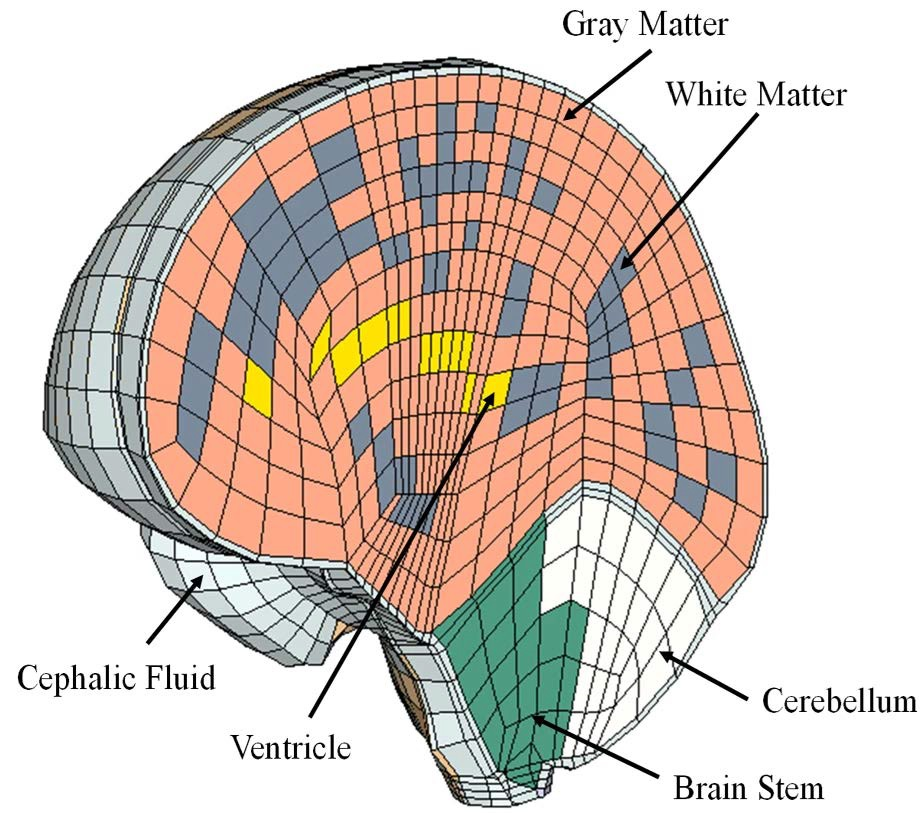Traumatic brain injury
Motivated by the experimental observation of shear shock waves in brain tissue, I studied the formation of such waves using theoretical and computational techniques. In this context, I highlighted the current limitations of approximate analytical approaches in contrast to exact mathematical formulas, see the 2024 Eur. J. Mech. A Solids paper. My results also emphasise the benefits of using shock-capturing computer methods, as shown in my 2022 Wave Motion paper. Based on these results, I then proposed a three-dimensional computational framework aimed at the study of shear shock waves in the brain, see arXiv preprint 2310.04355. Based on existing FEM head models (Figure), a high-performance shock-capturing code is currently under development.
In view of future applications in brain mechanics, I also became interested in finite-strain models of soft poroelastic solids. In this context, I studied the propagation of plane waves in fluid-saturated media. In contrast with monophasic solids, there exists a nonlinear poroelastic compression wave, cf. my 2021 Proc. R. Soc. A publication.

